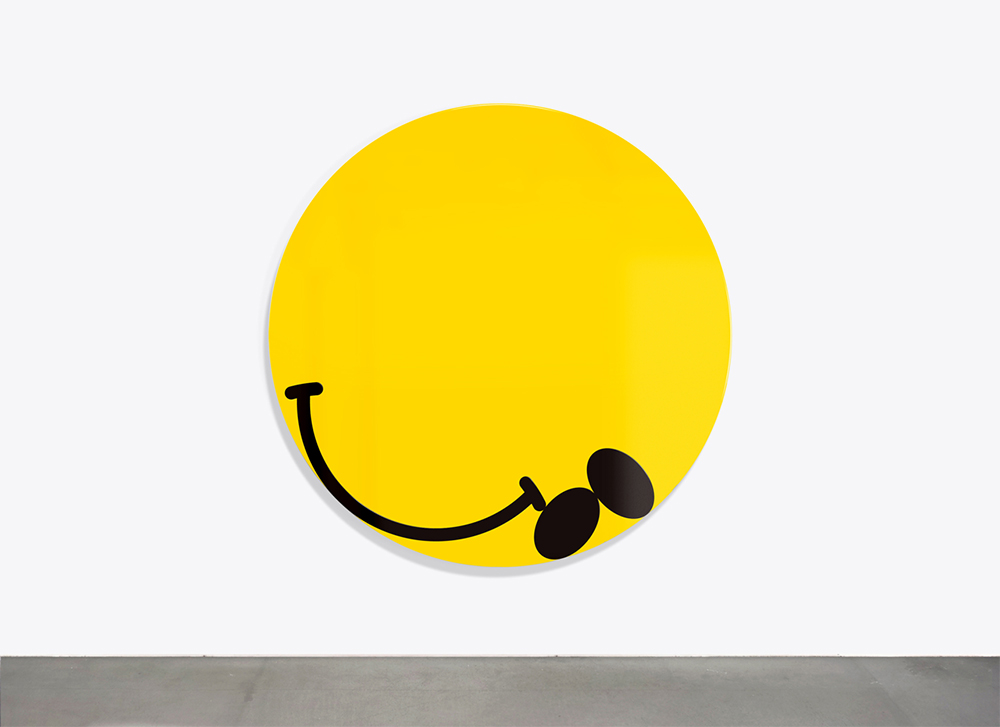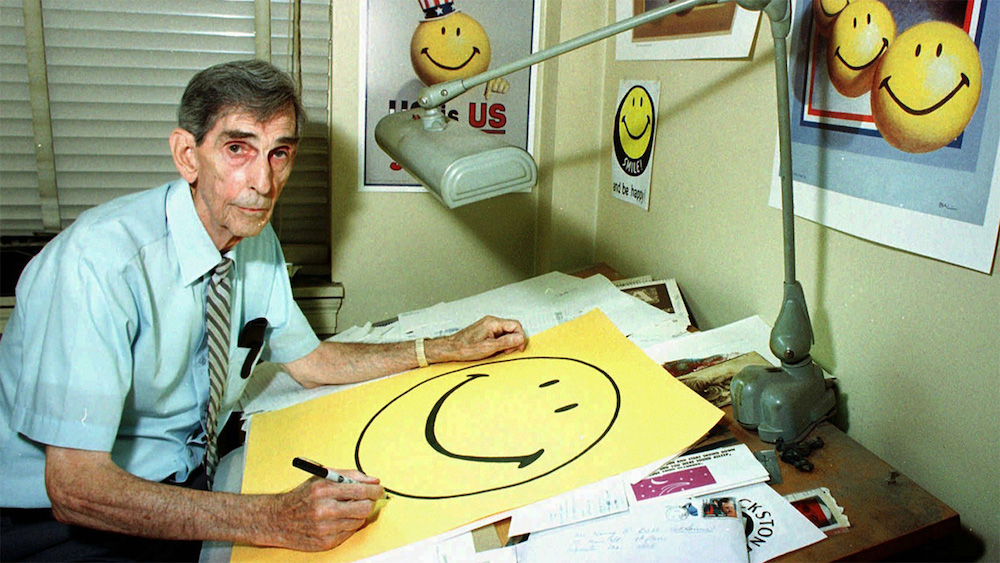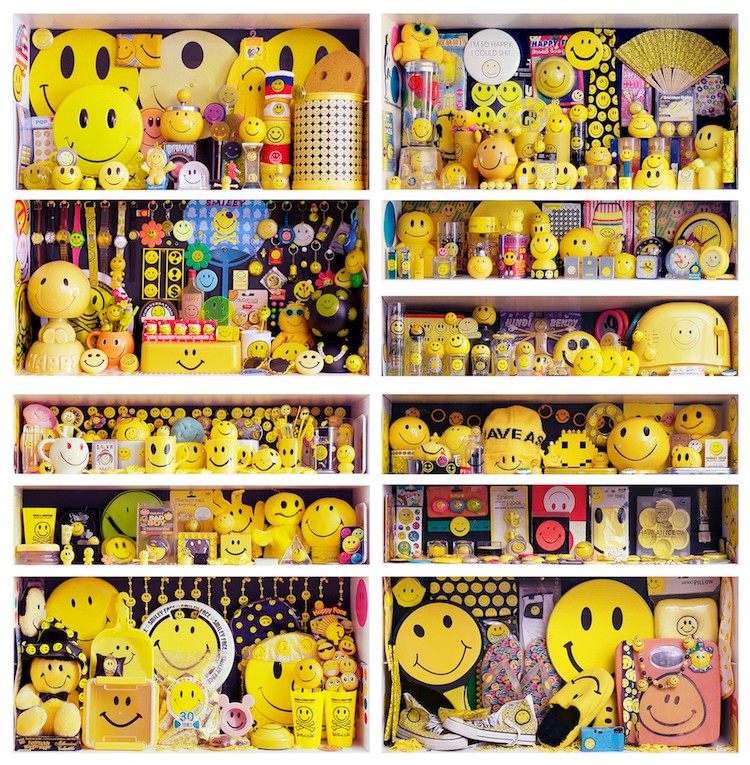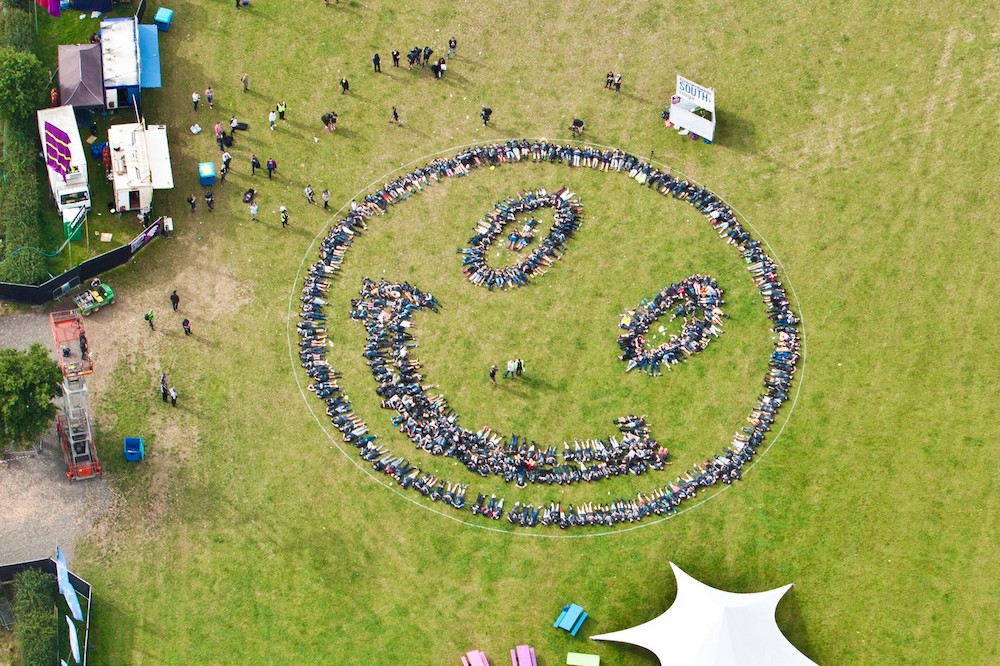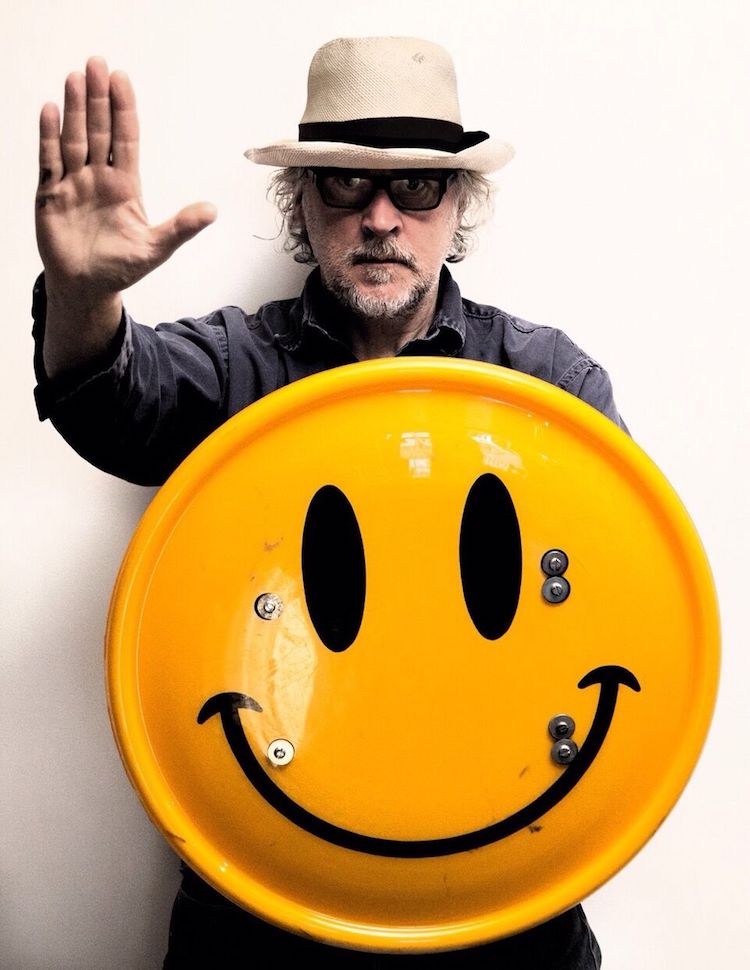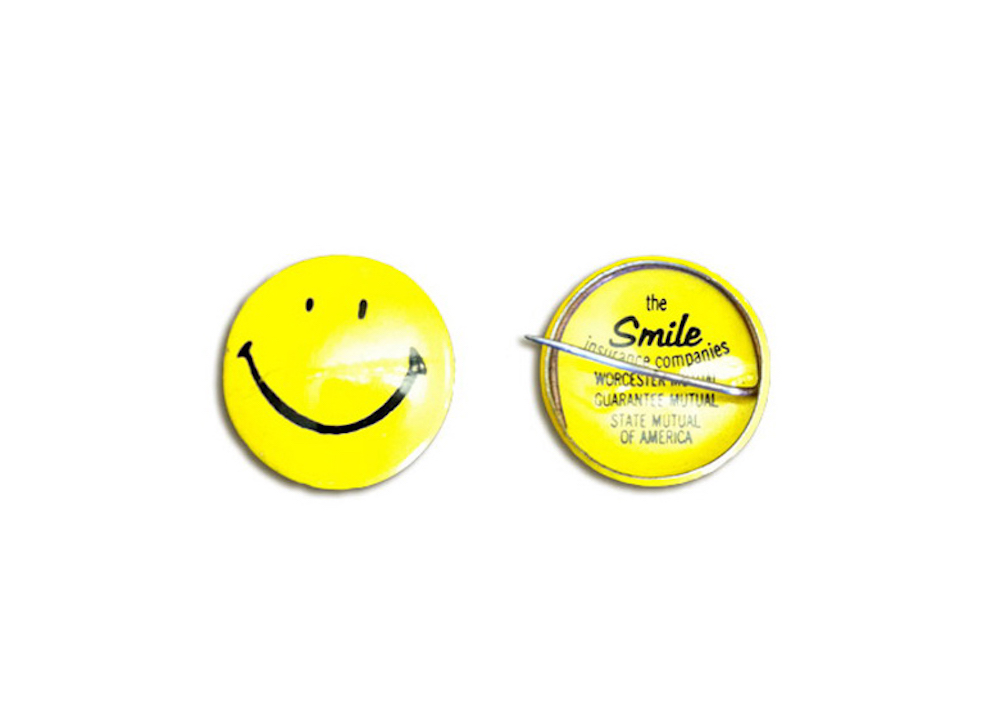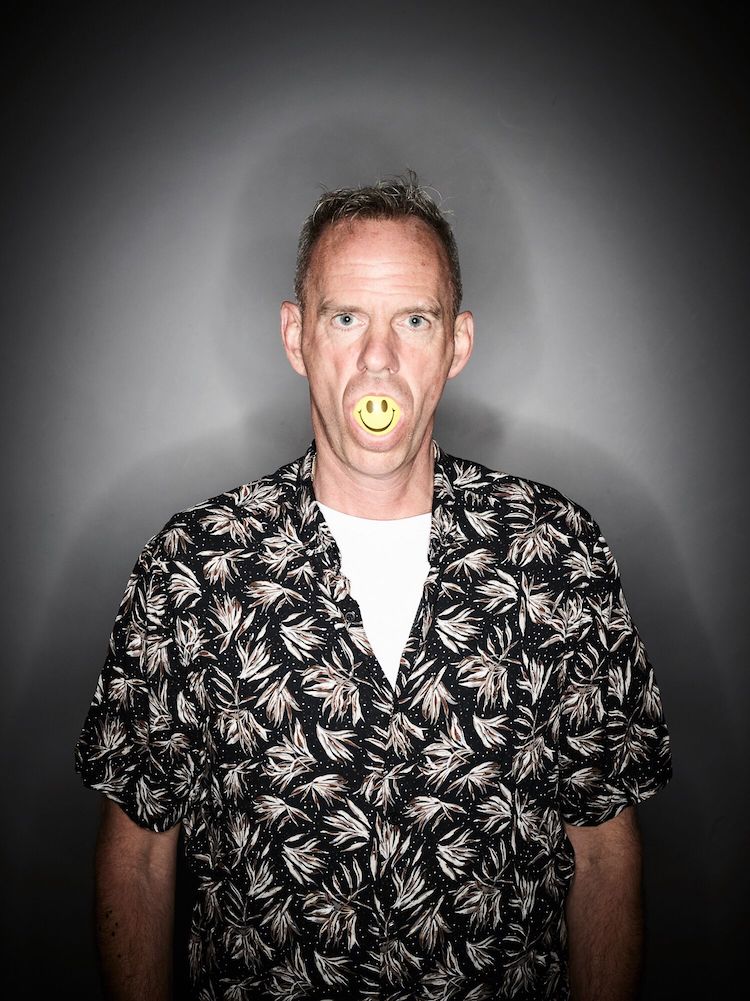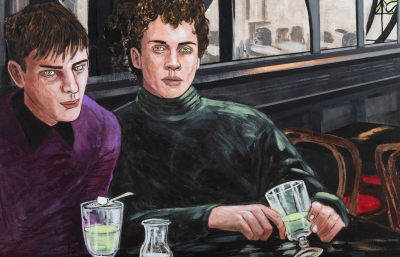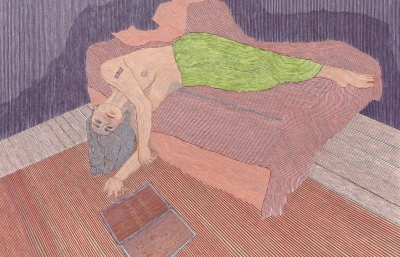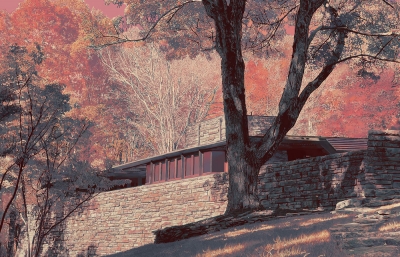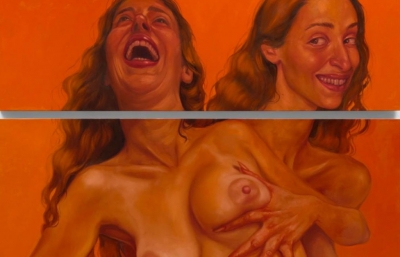For years the smiley face icon has been a staple of Norman Cook, aka Fatboy Slim's live show and full-on aesthetic vibe. He's about making people feel good, with DJ sets all about the mantra "smile and die." What a good ring! We know Fatboy Slim as one of the most successful DJs of all-time, with "Praise You," "Weapon Of Choice" and "Right Here Right Now" being the songs that you could play in any club in the world and have an audience feel it. With over three decades in music, Fatboy Slim has also merged his work with art, getting ready to open his curated show, Smile High Club, featuring the likes of Vhils, Ron English, Carrie Reichardt among others at Underdogs Gallery in Lisbon on June 21, 2019. We sat down with Cook to discuss how his curation differs in fine art, his own collection of art, and how the alter egos of musicians and street artists merge.
Evan Pricco: How is Norman, the art curator, different from Fatboy Slim, the music curator?
Fatboy Slim: Norman is more thoughtful and relaxed than Fatboy. Fatboy just wants to make you smile and dance, but Norman is more interested in aesthetics and beauty. Most importantly though, Fatboy has been curating music for ravers for 35 years and occasionally takes his job for granted, but Norman is new to art curation and is still filled with wonder and awe at the idea of working with his favourite artists and thoroughly enjoying this new stimulation. Both Norman and Fatboy are color blind.
I did not know that! Throughout your career, you have seen so many trends in both art and music, but does this era feel like the most "in sync" when it comes to the culture genre?
I think the Instagram age is a good time for street or public art rather than fine art. New work and ideas flash round the world, and everyone is involved and informed instantly. It is so much more accessible for artists to be seen and for the rest of us to appreciate work on a wall the other side of the world. This is good, because with the advent of streaming music there is precious little artwork involved in record sleeves and posters which always tied music and art, and that connection is sadly lost. For example, I first discovered Keith Haring through a Malcolm McClaren record sleeve.
Yeah, it's like the physicality is lost but there is still this constant conversation happening between art and music. What were your criteria for curating this show? What sort of things were you looking for?
I was attracted to artists who appreciated the rich heritage of the smiley icon, who had dug deep enough to know who Harvey Ball was. Many of the artists were favorites because the smiley often cropped up in their work. Many are personal friends of mine so nepotism was a significant factor, naturally. Some were simply people whose work I love, and I wanted to get involved with or have more people see their work.

Do you collect art, and if you do, when did you start collecting?
I am a big collector of art. I started when I bought a Keith Haring print in New York in the mid-1980s. I particularly like Kenny Scharf, Shepard Fairey, and Inkie. I am very lucky that through my career I have got to meet and sometimes hang out with my favorites. I have a long-running and richly entertaining collaboration with RYCA and more recently have hooked up with Bordalo II and Vhils, hence the invitation for me to curate this sho
What's a favorite piece you own?
My current favorite is a Vhils lazer cut and carved poster portrait, a gift from the man himself…

The show is based around your connection to the smiley face, and the show is based on that smiley face logo (of sorts). Why the smiley, and how did that become part of your whole aesthetic?
The smiley was born the same year as me and has been following me around ever since, cropping up in pop-culture and always summing up a kind of peaceful, loved up goofball aesthetic that turns me on. Eventually, I got a smiley and crossbones tattooed on my arm, and since then it has become my logo as well as my mantra: “smile or die.”
In your career, do alter egos for musicians feel the same with alter egos and sort of "street art" names for fine artists? Is there a similar creative angle there?
I have never really thought about that one… I suppose we both like to hide behind a more romantic, outlaw alter ego that is possibly a comic book exaggerated version of ourselves. It allows us to escape into a more creative world of slight fantasy, less inhibited by day to day shackles of reality. Street artists probably have more need for anonymity if they are working illegally which is probably more legitimate than pop stars wanting to reinvent themselves without their dull real names or lives!
What are you most looking forward to with the show?
I have thoroughly enjoyed the whole process already. Getting to meet people like the London Police whom I have collected and followed but now share jokes with is a real thrill. I suppose finally sweeping up the mess and opening the doors to the public for the first time will excite me in the same way as holding the first record that I was part of making. A new thrill based on the joy of being able to be involved in something you have previously just loved.
Smile High Club will be on view at Underdogs in Lisbon from June 21—July 26, 2019.
Artists in the show include Andrea Harz (UK), Bob Jaroc (UK), Carrie Reichardt (UK), Chemical X (UK), James Joyce (UK), Jimmy Cauty (UK), Joseph Ford (UK), Mark Vessey (UK), Pedrita Studio (PT), Ron English (US), RYCA (UK), and The London Police (UK).


